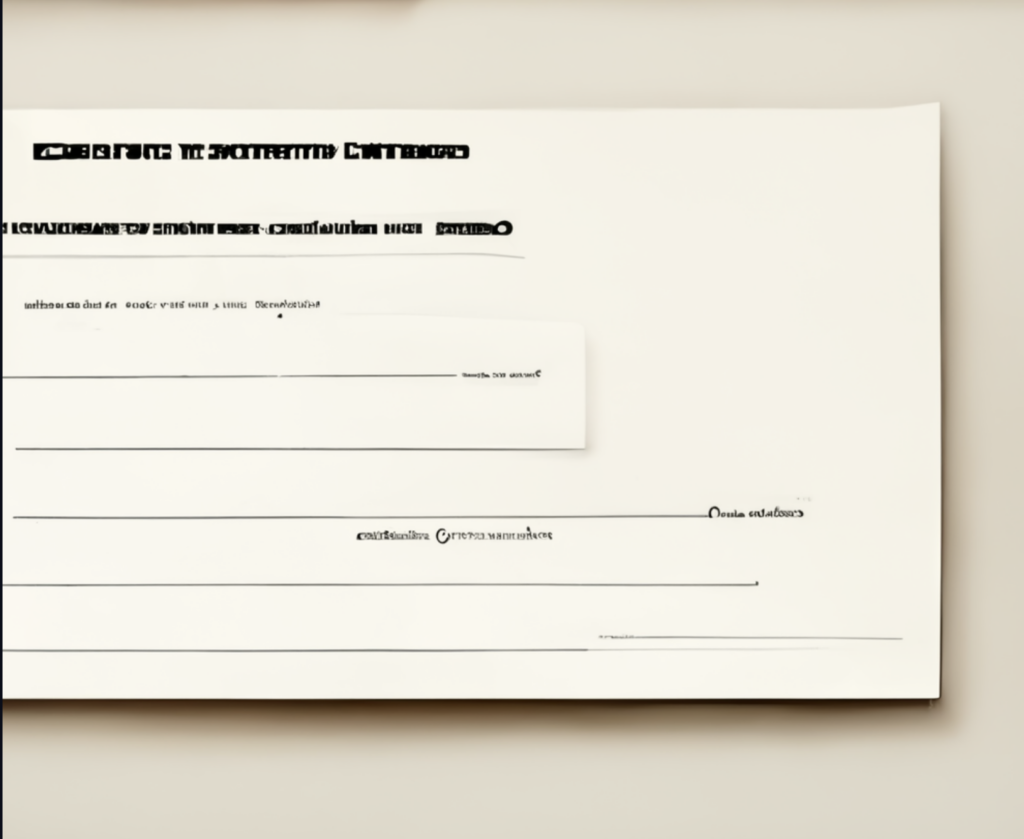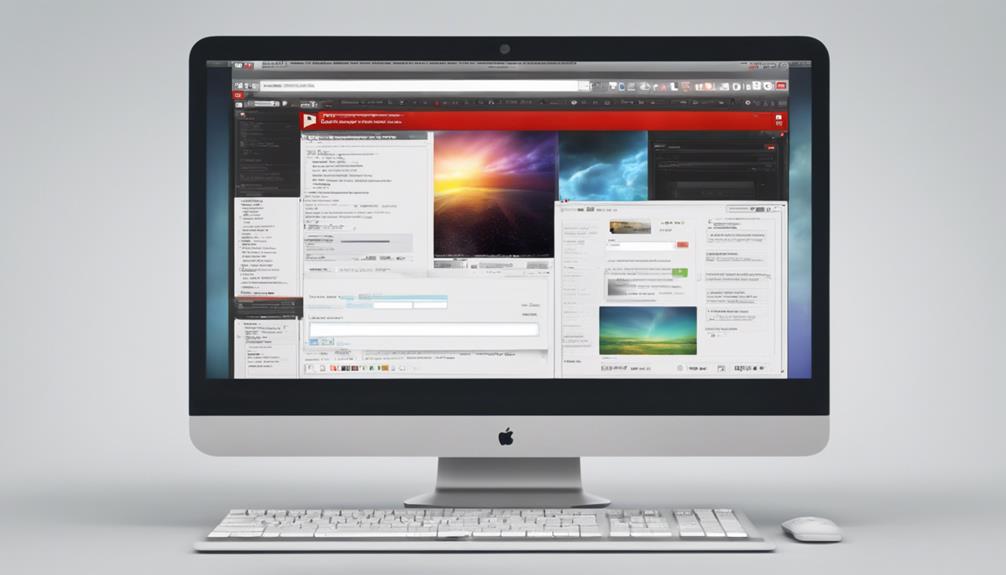You may be just starting your online business or struggling to get organic traffic from your SEO (search engine optimization). Perhaps you have decided to use paid ads to speed up your traffic generation.
It is smart to learn as much about this strategy as possible. Too many marketers launch paid ads without knowing anything about it and waste their money.
There are many types of paid ads that you can run and places where you can place them. Understanding your target audience and how to set a budget is important.
It is essential to learn how to monitor and adjust your efforts to ensure that you get the best return on your investment. This section will introduce you to online paid ads. It will give you a solid foundation from which to build any strategy.
(Originally published at https://cybermediacreations.com on December 17, 2022.)
Ready to get started with paid ads? Here are some tips to help you run a successful campaign:
Understanding how Pay-Per-Click Ads Work
Place ads on search engines and other people’s websites. You can also place them in email campaigns or on social media platforms to target a particular demographic.
Most of the time, you pay per click. However, in certain instances such as direct dealings between site owners or list owners, you may be charged a flat fee per month or per mailing for the ad space.

Bidding will be made on keywords, and the ads will appear on relevant websites or search engines when people search for these words and phrases. A social media campaign targeting women over 60 interested in a particular topic might be another option.
You will usually establish a budget for the day and a maximum spend per click. The system will then ensure that your money is used in the most effective places and at the best times to help you compete against other bidders for the same keywords.
When someone clicks on your ads, you get paid. You don’t have to pay for each time your ad is shown to an audience. This helps you feel more confident in knowing that your ad won’t go to waste with the wrong audience, provided you know how to set up your campaigns for the right audience.
To get started with paid ads, you will need to do a bit of research. First, identify your target audience and determine which platforms they are most likely to be on. Then, set a budget that you can afford and is aligned with your business goals. Finally, monitor your results closely so that you can make adjustments as needed.
How to Know When Paid Advertising is Time
When they are frustrated with trying to rank high in search engine results pages, many marketers resort to paid advertising. It can be difficult to forget that organic traffic can also be generated using free methods other than SEO rankings.
Paid advertisements, even though your content can be viewed on social media platforms and rank well on Google, can help you gain the attention and views that you didn’t get in an organic setting.
Google may place you behind the rest. You’re not guaranteed to get your content seen on social media platforms. The social media algorithm will determine that.

Paid advertising allows you to get the results you need quickly without having to wait or try to figure how to strategically reach the right audience. Every marketer will set their own standards for when it is time to start looking into paid advertising.
This strategy should not be pursued if you are in debt. It is important to have enough money set aside not to lose your ability to pay your bills and pay yourself for your work.
It is also a bad idea to launch a paid advertising campaign before you fully understand how paid advertising works and how the platform where you are interested operates.
Paid Ads in Search Engines
Google remains the most popular search engine. Many marketers rely heavily on pay per click advertising (PPC) to drive traffic to their sites and convert potential buyers.
Although Google is the most popular search engine, many marketers advertise on Bing and other search engines. Search engines are often the first to show paid ads.

These rank higher than any organic search results. This gives you an edge over your competition if they have not been able organically to rank your content higher than yours.
These sponsored results will appear whenever a user typed in a keyword or phrase the advertiser bid on. Advertisers will only be paid if the user clicks on their ads.
Advertisers have to pay for every time a user sees the ad. This can be costly, so it is important that you only pay for users who are interested in your product or services and will convert after interacting with your ads.
Benefits of Paid Advertising
Paid advertisements are an excellent way to drive traffic to your site, get more views for your content, and gain new leads. You’ll also be able to compete with larger brands that have huge marketing budgets.
Every time someone sees your ad, you pay a fee. Since it is not free to use the paid advertising platform or network, it is important to only pay for the users who are most likely to become a customer. Focusing on the right audience and having the right ad will allow you to reach more potential customers who will be interested in what you’re offering.
Paid advertising also allows you to gain valuable data that can help inform your future marketing, content, and product development strategy.
You can see which ads are performing well and which are not, as well as the landing page that users are most likely to visit after seeing your ad.

You can also use this information to improve your future ads or create new ones. You’ll also be able to test different things, such as:
- The type of content that is most effective at driving traffic or conversions
- The time of day or day of the week that results in the most impressions and clicks
If you’re considering paid advertising, do your research first to understand how each platform works and its strengths and limitations. Take the time to test different ads for different keywords or audiences until you find one that is most effective for your needs.
Paid Ads on Social Media
Social media is now a powerful competitor to search engines. Instead of going straight to Google, many people look to YouTube, TikTok and other social media sites for the information they are looking for.
Many marketers now use social media to manage their paid advertising campaigns. Advertisements can be run on Facebook, Instagram, Snapchat, Pinterest and Twitter.
Social media platforms are great for promoting your ads because they often have the same information that search engines don’t. To deliver the results to their viewers, they use the keywords phrases entered into a search engine.

Social media can often provide information like gender, age, geographic location and common interests.
This allows you to target users more than if your ads were placed on search engines or other sites. Paid ads on social media platforms can result in increased engagement.
The results of a search engine are displayed to the user. They can click through to go to the site and take action. You can have people click on your Facebook ad and they can also comment on it, like it, and share it with others.
You can target the right audience on social media platforms with the correct demographic data, resulting in increased conversions and higher profits.
You can also monitor your campaign performance on social media and adjust the campaigns accordingly to make them more effective.
Different platforms offer different paid advertising options. Some social media platforms allow you to upload images and video to your ad campaigns. They also have very different ways of presenting their measurement and tracking results.
You can’t do everything on social media in terms of paid ads. You may pay for ads to influencers with a large following on the platform who promise to promote your product or website in return for a payment.
Before starting a paid advertising campaign on social media, it is essential first to identify your goals and objectives. This will help you determine which platform is the best for your business and what type of advertisements you should use.
Also think about where your target audience spends the most time online, whether that’s searching Google or scrolling Instagram. A paid advertising campaign on social media should align with your overall marketing and content strategy.
Make sure you have a clear call to action in your ad, such as encouraging users to visit your website or sign up for a free trial. And remember to track and measure the results of your campaign so that you can optimize it over time.
With paid advertising on social media, you can reach many potential customers and drive traffic to your website or business. Just be sure to carefully research each platform and choose the right advertisement type for your unique goals and objectives. Good luck!
Paid Ads Purchased Directly from Site Owners
Many website owners sign up for Google AdSense to monetize their content. Others prefer to sell their space directly to advertisers to cut out the middleman.
You can contact the site owner if you find a site or blog with traffic similar to your target audience and ask them if you would like to rent space on their site.
It will typically be a flat-rate publishing arrangement. This means that you will design a graphic, such as a banner advertisement, which will appear in the sidebar, in the web content or under the header. You can also list your website on platforms other than Google to make it available for marketers to buy ad space.

The advantage of paid advertising directly from the site owner is that you can access targeted audiences and get a high level of engagement. The site owners also have more control over who sees your ads and how often they are displayed.
However, it can be difficult to negotiate with website owners, and many other advertisers may compete for their space. This makes it a more expensive advertising option if you are trying to reach a broad audience.
Before purchasing paid ads directly from site owners, it is essential to research and assess the quality of their website carefully, as this will influence how well your ad may perform. Additionally, consider investing in tools and techniques that can help measure the performance of your ads and adjust them accordingly to improve your ROI.
Overall, paid advertising purchased directly from site owners can be a great way to access a large audience with high engagement. Just be sure to use the right tactics and strategies to make the most of this opportunity and achieve your marketing goals. Good luck!
Paid Ads for Solo Email Marketing
Solo email marketing campaigns are a good option if you don’t already have an email list or you want to increase your reach. These can be used as an alternative to or in conjunction with affiliate marketing strategies, where you recruit others to promote your products.
Solo email marketing is where you approach list owners to pay them to send an email to your subscribers. You can find marketplaces that will give you information about the niche you are in, how many subscribers you will be sending the email to and the cost of the communication.
You can promote a product you just launched with a single email. Send your subscribers to your landing page to learn more about your lead magnet offer or get them to click through your link.
These campaigns will sometimes be flat-rate email campaigns. Other times, they will function in the same way as a paper click add campaign, which is where you pay a fixed amount per click through.
It is important to ensure that the marketer you work with has a high click-through and open rate. It is not a good idea to deal with spammers who have emailed you and cannot deliver their email.
These are the Three Types Of Creative Media You Can Use for Your Ads
You have many creative options when it comes to paid advertising campaigns. First, you can use text. Text is often used to communicate with your target audience, whether you’re using search engine advertising or a solo add.
You want to make sure that you include the words and phrases that are most persuasive to get your audience to click through to you site.
Text ads should be concise and relevant to your target buyers. You should highlight any special offers you offer.
Another format that you can use in your advertising campaigns is display advertising. This uses image ads like banners. Because it stands out from the rest, display ads work well on websites and social media.
Your display ad will be primarily based upon an image but you will use text to create a strong call-to-action that encourages viewers to click on the image to visit your site.
When creating display ads, some people like to include an animated effect in their banners to draw visitors’ attention. Display ads can be either horizontal or vertical.
You can also use video ads to drive traffic to your website. Video ads can be created on social media platforms or elsewhere. You can also pay to advertise that appears in someone else’s videos before, during or after their video ends (pre-roll), mid-roll or post-roll).
These videos are extremely popular on YouTube, TikTok and other social media platforms. YouTube is the 2nd largest search engine, and TikTok is catching up with them.
Set a Goal and Budget for Your Ad Campaigns
Before you pay for advertising online, it is important to understand your goals. This will allow you to create the most creative ads possible and will help you pinpoint the right audience.
Are you looking to grow your customer base or sell your new product? You need to understand the overall goal and who your target audience is.
Be specific about your goals and not vague. You should be able see whether your ads convert according to the numbers and conversions that you have set. For example, 30% conversion on your sales page ads.

When setting goals, be specific about your budget. This strategy can lead to significant money loss if you don’t pay attention. People set high daily ad spending amounts but don’t realize that the platform will consume every penny of it.
Start with a small amount to get started. Once you have the ability to tweak your campaign to make it more effective, you can increase it. It doesn’t necessarily perform well in generating clickthroughs.
You’ll lose money if clickthroughs don’t pay off in terms of sales or new subscribers. If you need to make changes to your ads or pages, it is worth taking some time.
To make smart ad spending decisions, consider how much you can afford to spend on these ads so you don’t have to take out debt. As you learn, this is a great place to start even if it is only $5 per day.
Don’t assume that spending more will immediately result in a large influx of profits. You should decide how much you will spend on each platform if you plan to use paid ads in multiple areas.
It is important to spend more on platforms where your target audience is most likely to be present in greater numbers. If your target audience is older than 50, Facebook might have more people that you’d find on TikTok. This means you can spend more money on your ads on Facebook.
Setting a budget can maximize your advertising dollars while achieving your marketing goals. To make the most out of paid advertising, research your audience and set a budget. Track your results to track your progress.
How to Find the Right Targeting for Your Ads
You need to set up your targeted ads for paid advertising. This can be tricky and you will have to adjust as time passes. Targeting a broad audience with your ad campaigns is not a good idea. Targeting a specific audience is a better way to spend your advertising dollars.
This will ensure your ads are displayed to people who are most likely to click on or engage with your ad. It is important to target the right region or country.
Focus on the American market if 90% of your customers live in America. Other demographics can be set up as well. For example, you could determine the age of your subscribers or buyers, their gender, and their income levels.
You can also use other targeting elements to target your ads. Some platforms allow you to present your ads based on previous behaviors, such as what they have purchased or where they’ve been online.

You can also target your ads based on their interests.
Having a clear image or video will help with this step. You want to ensure you are targeting the right audience because it is difficult to change once you start.
A/B testing is a great way to improve your click-through rates and conversions, but you must first target the right audience.
Some common mistakes marketers make include targeting too broad of an audience, which can use too many marketing dollars and reduce click-through rates and conversions. To get better results, it is important to target a specific audience based on their demographics, interests, behaviors, or other factors.
Once you have determined your target audience, you will need to set up A/B tests to determine how to improve click-through rates and conversions. This can involve a variety of variables, such as the image or video that accompanies your ad, the copy in your ad, or other elements. It is important to test multiple variations so that you can find the right combination that yields the best results.
To succeed with paid advertising, it is important to target the right audience and set up A/B tests to determine what works best. You may need to test multiple variations of your ads before finding the one that performs best for your particular audience and business goals.
How to Choose the Right Ad Format for Your Campaign
When you are planning your paid advertising campaign, it is important to think about the ad format that will work best. There are a variety of different options to choose from, so it is important to consider what will be most effective for your particular business and its marketing goals. It is also important to consider the audience you are targeting and what format they will most likely respond to. Some factors to consider when choosing an ad format include:
Your business goals. Every ad format is designed for a different purpose, so it is important to consider how your ad campaign fits your overall business strategy. For example, if you want to drive traffic to your website, a display or banner ad might be the most effective format. On the other hand, if you are looking to increase sales, a direct response ad might be more appropriate.
Your target audience. Certain ad formats work better with particular demographics or interests. For example, if you are targeting younger consumers, a mobile ad may be the best option. You should also consider where your audience will most likely engage with your ads, such as on social media platforms or search engine results pages.
The type of content you are promoting. Certain ad formats work better with certain types of content, such as images versus videos or text. An image ad may be more effective if you are trying to drive traffic to a website. On the other hand, if you are looking to get some social shares, a video might be a better fit.

When choosing an ad format for your campaign, it is important to consider all these different factors and carefully plan your approach. With the right strategy, you can create successful paid advertising campaigns that help you reach your business goals.
Monitoring and tweaking the results of your ad campaigns
You should not assume that paid ads will work. To make your ads more effective and profitable, you must be able to see what is happening to them.
You can compare the amount of money you have spent with the results as the campaign progresses. You can replace an ad that isn’t working for you with a better creative to improve its performance.
You might also need to adjust your budget depending on how things are progressing. Once you have a clear picture of which ads groups work best, then split-test those creatives against another set.
UTM parameters can provide a wealth of information. UTM parameters can help you determine the source of traffic (which is useful if you run paid ads on multiple platforms).
It will also show you information such as what kind of content was sent to the traffic (which can be helpful if you use text, images, and video ads), and what keywords and phrases were used.
If you wish to run paid ads on the same page on different networks, UTM parameters will help you determine which ones perform better so you can adjust your efforts.
Tips to Get a Great ROI from Your Ad Campaigns
You can track and adjust your ad campaigns to increase the return on investment (ROI) you are aiming for. This will allow you to improve your strategy and ads so you are making more profit than you’re spending.
You should pay attention to what data is being provided by platforms. However, it would be best if you also considered split-testing your landing pages to ensure a higher ROI. You’ll waste money and blow your budget if you ignore how your ads perform.
You can duplicate an ad that performs better than others on different platforms, and change its style and approach to get a better return.
Paid ads should not be something you do if you are desperate to make money online. Paid ads are not a good idea for those with limited funds. They can be a great way to make a quick buck and get a high ROI.
Pay-per-click advertising should be used when you are at the point in your marketing journey where you have the funds to invest, and the desire (or need) for scaling up your business.
With these tips, you should be able to get a great ROI from your ad campaigns to make money while also growing your business. Once you have a good idea of what works and what doesn’t, it will be easier for you to create more successful campaigns in the future. You can make informed decisions based on data rather than just guesswork and hope for the best. This will help you maximize your ad spend and generate even more income from your online marketing efforts.
Paid Ads FAQ
What are some common types of paid advertising platforms?
Some common paid advertising platforms include social media networks, search engines like Google and Bing, and various ad networks specializing in certain kinds of content, such as text ads or video ads.
What are some common types of paid advertising platforms?
Some common paid advertising platforms include social media networks, search engines like Google and Bing, and various ad networks specializing in certain kinds of content, such as text ads or video ads.
Is paid advertising a good idea for beginners?
If you are new to the world of online business and digital marketing, it is often recommended that you start with free marketing methods. That way, you can learn the ropes and get a sense of what works best before deciding to invest in paid ads.
What do I need to know before getting started?
You will want to have a solid understanding of your target audience and the type of content they are likely to respond to before you begin your ad campaigns. You will also need clear-cut goals and a plan for measuring success (and failure) for each campaign. This will help you make informed decisions about which platforms work best for specific ads, so you can get a good ROI on your ad spend.
How do I create a successful paid ad campaign?
You will want to carefully research and test various options before starting your first paid ad campaign. This will help you get a sense of what is working and what isn’t. Once you know this, it will be easier for you to make the most of each platform and see the best return from your marketing efforts.
What should I do if my paid ads are not working as well as expected?
If all of the data points to the fact that your ads are consistently under-performing or that your target audience simply doesn’t respond to them, then it may be time to re-think your strategy. Maybe the problem is with your target audience, or maybe what you are offering isn’t resonating with people as well as you might have hoped. In either case, consider making changes to make future campaigns more successful.
What should I do if my paid ads are performing better than expected?
Congratulations! Now the trick is to keep it up and make sure that your marketing efforts continue to yield these kinds of results over an extended period. The best way to do this is to keep a close eye on performance metrics and adjust things like copy and design accordingly as you fine-tune your campaigns in order to get an even better ROI from each ad spend.
(Originally published at https://cybermediacreations.com on December 17, 2022.)










